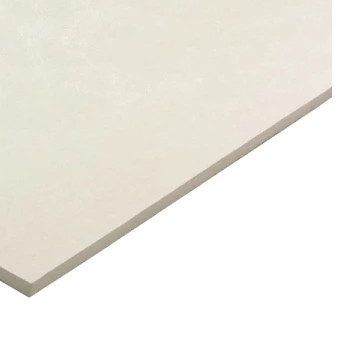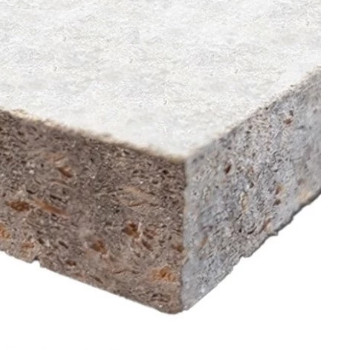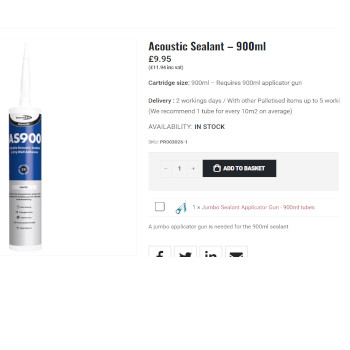
SOUNDPROOFING YOUR FLOOR/CEILING AGAINST DISTURBING NEIGHBOR NOISE*
We always hope to return from work to a home filled with peace and quiet. While we have control over the noise we make inside our homes, finding peace and quiet can still be a struggle. Noisy neighbours, often living directly above or below us, can frequently be the culprits. When polite requests to lower the noise levels made to our neighbours prove ineffective, we may need to take additional measures. In this article, we will outline several effective techniques to reduce your neighbour's noise by 50dB!
NEIGHBOR'S NOISE LEVEL
Noise level is measured in dB (decibels). The higher the dB value, the louder the noise in the room. Therefore, consistent exposure to noise can lead to a deterioration in overall health. Excessive noise, even if not extremely loud, can negatively impact mental well-being, leading to feelings of irritation, nervousness, aggression, and even psychological disorders.
In general, any noise that exceeds 70 dB is typically considered disruptive. Residential noise standards often start at 50 dB, which is approximately equivalent to the noise level of a typical 'Henry' cleaner.
So, in essence, we assume that your neighbour generates a noise level of around 50 dB. While this is a significant level of noise, it is possible to mitigate it using various techniques and materials. Below, we present a few of them.
4✔ GOLDEN TIPS TO STOP NEIGHBOURS NOISE
There are some straightforward methods to keep unwanted noise out of your space when dealing with noisy neighbours. To block the noise generated by your neighbour, follow these steps:
1. IDENTIFY THE SOURCE OF NOISE
First thing first! - talk to your neighbours. If the noise involves your neighbours, have a polite conversation to understand their perspective. They might not be aware of the issue or may be willing to cooperate.
Next, spend some time in the affected area and pay close attention to the noise. Try to identify patterns and the times when the noise is most intrusive.
TIP
‘Sound measuring apps or devices can help you quantify the noise level and potentially pinpoint its source.’
Speaking about acoustics, it's essential to highlight that up to 8 out of 10 of our clients face issues with noisy neighbours. While there are products on the market that can reduce the noise levels inside your home, it's crucial to start by identifying the real source of noise entering your rooms. Therefore, focusing on the acoustic sealing of your home is paramount.
The most common places through which sound and noise penetrate include:
-Floorboard connection
 If your floor is 25mm thick and covered with just a carpet, it's understandable that you can hear your neighbour's noises. In this situation, a smart choice would be to install high-density ceiling panels (with a density of 1350 kg/m3) on the underside of your floor. This board has the capacity to reduce noise by an impressive 54dB!
If your floor is 25mm thick and covered with just a carpet, it's understandable that you can hear your neighbour's noises. In this situation, a smart choice would be to install high-density ceiling panels (with a density of 1350 kg/m3) on the underside of your floor. This board has the capacity to reduce noise by an impressive 54dB!
 Another noteworthy solution to consider is Versapanel. This A2-rated cement building board is renowned for its impressive strength (1480 kg/m3), mechanical resilience, and acoustic capabilities, making it an ideal choice to address the issue.
Another noteworthy solution to consider is Versapanel. This A2-rated cement building board is renowned for its impressive strength (1480 kg/m3), mechanical resilience, and acoustic capabilities, making it an ideal choice to address the issue.
-Imprecisely Cut Floorboards
One common reason for noise transmission through floors is the lack of continuity. What does this mean? The answer is relatively straightforward – it's the absence of material in specific areas. When floorboards are not cut precisely, construction errors add up, leading to substantial gaps at the joints between the boards. These gaps become prime pathways for noise to travel through.
The solution here is either to replace the imprecisely cut floorboards or, if the room's height allows, lay 22mm Versapanel on top. This effectively covers the gaps and minimises noise transmission.
–Utility pipes
It appears that the ceilings that separate you from your neighbour often contain various vertical installations, such as gas pipes or heating ducts. These areas are frequently left uncovered, which can lead to noise leakage. In such cases, the ideal solution is to use mineral wool with a density of at least 60kg/m3. This material effectively fills these spaces and helps reduce the transmission of noise.
-Vertical Ventilation Shafts Shared with Neighbors
Vertical ventilation shafts shared with neighbours can be another source of noise transfer in buildings. These shafts can act like conduits, allowing sound to travel easily from one apartment to another.
To address this issue, it's essential to soundproof these ventilation shafts adequately. This may involve adding acoustic insulation or barriers within the shafts to impede the passage of sound. By doing so, you can help minimise the transmission of noise through these shared spaces and improve the overall acoustic environment in your living area.
-Thin Material Thickness and Inappropriate Material
If your floorboards are too thin, they won't effectively soundproof your floor. Thicker floorboards provide better sound insulation by adding mass and reducing vibrations. Consider upgrading to thicker boards to improve soundproofing.
Fo instance, using 12.5mm gypsum board on the ceiling won't effectively soundproof it. It's best to use dedicated boards with three times greater density for this purpose. Acoustic boards are designed to be denser rather than thicker, making them more efficient at reducing noise transmission.
By addressing these issues, you can significantly enhance the soundproofing capabilities of your space, whether it's your floor or ceiling.
2. SEAL GAPS AND CRACKS
It might turn out that your neighbour isn't as loud as you assume. The problem could simply be due to inadequate sealing of the floor that separates you. In the case of the ceiling, the most common culprit for noise intrusion is the gaps left around its edges. By sealing these gaps, you not only keep out dust but also create a barrier to block noise.
Depending on whether your neighbour is above or below you, it's most effective to seal the floor from above. You can achieve this with a readily available sealant, which you can easily find nearby. According to SoundproofingStore, it's priced at £9.95 for 300ml

Picture credit:soundproofingstore.uk
One tube might not be sufficient to seal the floor entirely. It's advisable to purchase 2-3 tubes. So, if we can reduce the noise level by at least 15dB with £30, it will definitely be worth it!
3. SOUNDPROOFING THE CEILING
If you've already sealed the floor and replaced floorboards without seeing significant improvement, it's time to consider using insulation material that adds mass to the floor to effectively stop sound transmission. We're talking about insulation material with a structure designed to trap sound on its own, and that's where rock wool-type glass wool comes into play.
Rock wool insulation, such as Rockwool, possesses the unique properties needed to halt sound effectively. Its structure is adept at capturing and dampening sound, making it an ideal choice for soundproofing your ceiling. By adding mass and sound-absorbing capabilities to your ceiling, wool insulation can significantly reduce the impact of noise from above, creating a quieter and more peaceful living space.
If you're in search of top-quality soundproofing insulation, you'll want insulation with the highest density. The density of insulation is a critical factor in determining its soundproofing effectiveness for walls or ceilings. Essentially, density categorises insulation as either adequate or highly effective.
The finest soundproofing insulation boasts the highest density, such as 100kg/m³ acoustic insulation slabs, which you can find from reputable brands like Rockwool and Knauf. These slabs are especially recommended for use in environments like hospitals, auditoriums, medical offices.
Rockwool RW5 and Knauf RS100 are excellent examples of high-density acoustic slabs purpose-built for commercial and industrial settings. The "100kg range" designation for these slabs refers to their density, which is 100 kilograms per cubic metre.
We have covered a lot about Rockwool insulation in article titled ‘THE UGLY TRUTH ABOUT ROCKWOOL AS A SOUNDPROOFING MATERIAL?’ or "THE SOUNDPROOFING POWER OF WOOL: UNVEILING THE TOP CHOICES." If you need further assistance or have specific questions related to the article or Rockwool insulation, please feel free to ask, and I'll be happy to help.
4. CARPET AND RUGS
If you're on a tight budget and can't afford more extensive soundproofing solutions, there's an alternative worth considering. Investing in a thick carpet can be a much more affordable option. This carpet should have impressive acoustic properties, boasting sound insulation ratings ranging from 2db to 30db.
It's important to ensure that this carpet covers the entire isolated surface area. Partially covering the floor that separates you from your neighbor isn't advisable. An acoustic carpet excels at efficiently absorbing noise, making it an ideal choice for various commercial settings, such as open-plan offices.
5. FURNITURE PLACEMENT
Sometimes, the area in your home that's most affected by noise can benefit from smart furniture placement. For instance, if you have a wardrobe, try positioning it with its back facing the source of the noise. The back of the wardrobe will work as a sort of noise shield, making the initial sound wave less pronounced. A more effective approach, if possible, would be to turn it into a built-in closet and fill it with clothes, adding an extra layer of noise insulation.
To put this in perspective, think back to your childhood when you might have hidden in a closet to get away from someone—remember how surprisingly quiet it was in there? Perhaps not entirely silent, but quiet enough to muffle the noise.
If you can't rearrange furniture to block out the noise effectively, consider turning your sofa, so that its back faces the source of the noise.
Properly positioning your furniture can potentially reduce your neighbour's noise by 5-8 dB in the best-case scenario.
CONCLUSION
We've explored several options to lower the noise levels in your home. It's clear that you don't always need to make major investments; sometimes, simply rearranging your furniture thoughtfully can bring about significant improvements. However, based on our customers' feedback, it's evident that the most reliable method to soundproof against noisy neighbours involves using high-density rock wool insulation, specifically with a density of 100kg/m³.
Interestingly, 2 out of 10 customers return to purchase more rock wool insulation from us after a few years to further soundproof additional sections of their ceilings. When considering soundproofing, keep in mind that the acoustic material should be dense and relatively heavy. This is the most effective way to protect your home from disruptive neighbour noise.
Related articles:
THE SOUNDPROOFING POWER OF WOOL: UNVEILING THE TOP CHOICES
THE UGLY TRUTH ABOUT ROCKWOOL AS A SOUNDPROOFING MATERIAL?
*All the information provided in the content published on Insulationgo blog is for informational and educational purposes only. Insulationgo LTD makes every effort to ensure the accuracy and timeliness of the content, but we do not assume any responsibility for any errors or omissions.
The information presented on this blog should not be considered as professional advice or a substitute for consulting relevant experts. Before making any purchase decisions or taking action based on the information presented here, it is strongly recommended to contact the product manufacturer directly to verify the details and ensure its suitability for your specific needs.
Any descriptions, drawings, photographs, data, proportions, weights, measured values etc. given herein may change without prior notice and do not constitute the agreed contractual quality of the products. It is the responsibility of the recipient of all products to ensure that any proprietary rights and existing laws and legislation are observed.
By using this blog, you acknowledge and agree that Insulationgo LTD shall not be held liable for any damages, losses, or inconveniences arising from the use or reliance on the information provided herein. This limitation of liability applies to all users of the blog, including but not limited to visitors, readers, and subscribers.










































































































